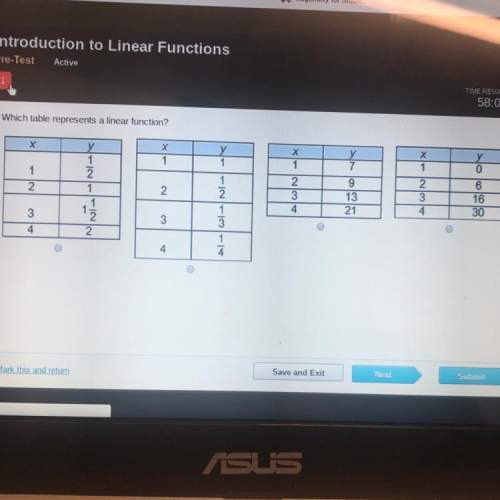
Mathematics, 31.07.2020 21:01 coopkm24
Typical machined parts require very tight tolerance in variance in order to work properly in their application. We took a sample of the length (in mm.) of 100 units from a large production run and got the following statistics: sample mean = 499.97, sample variance = 6.52
What is the 99% confidence interval estimate for the true population VARIANCE in unit length?
a. (499.30, 500.64)
b. (4.97, 8.93)
c. (4.64, 9.71)
d. (4.79, 9.32)
e. none of the above

Answers: 3


Another question on Mathematics

Mathematics, 21.06.2019 14:00
Bob’s bank charges him a $3.15 service fee every time he uses an out-of-network atm. if bob uses an out-of-network atm an average of three times every two weeks, how much will he pay in service fees over the course of a year? a. $327.60 b. $109.20 c. $491.40 d. $245.70 select the best answer from the choices provided a b c d
Answers: 1

Mathematics, 21.06.2019 20:30
Two angles are complementary. the larger angle is 36 more than the smaller angle. what is the measure of the larger angle?
Answers: 2

Mathematics, 21.06.2019 21:50
Determine the common ratio and find the next three terms of the geometric sequence. 10, 2, 0.4, a. 0.2; -0.4, -2, -10 c. 0.02; 0.08, 0.016, 0.0032 b. 0.02; -0.4, -2, -10 d. 0.2; 0.08, 0.016, 0.0032 select the best answer from the choices provided a b c d
Answers: 1

Mathematics, 21.06.2019 23:00
Acaterer knows he will need 60, 50, 80, 40 and 50 dinner napkins on five successive evenings. he can purchase new napkins initially at 25 cents each, after which he can have dirty napkins laundered by a fast one-day laundry service (i.e., dirty napkins given at the end of the day will be ready for use the following day) at 15 cents each, or by a slow two-day service at 8 cents each or both. the caterer wants to know how many napkins he should purchase initially and how many dirty napkins should be laundered by fast and slow service on each of the days in order to minimize his total costs. formulate the caterer’s problem as a linear program as follows (you must state any assumptions you make): a. define all variables clearly. how many are there? b. write out the constraints that must be satisfied, briefly explaining each. (do not simplify.) write out the objective function to be minimized. (do not simplify.)
Answers: 1
You know the right answer?
Typical machined parts require very tight tolerance in variance in order to work properly in their a...
Questions









Mathematics, 01.07.2020 20:01


Mathematics, 01.07.2020 20:01





English, 01.07.2020 20:01




Mathematics, 01.07.2020 20:01




